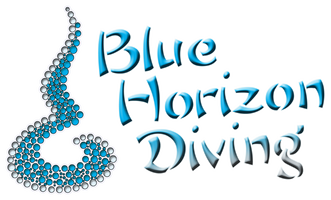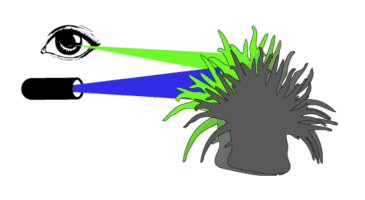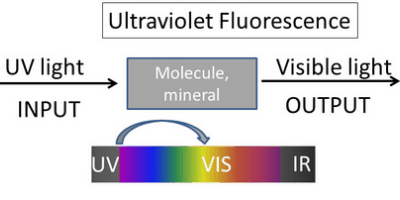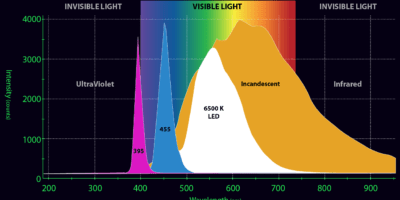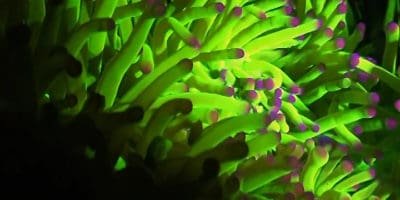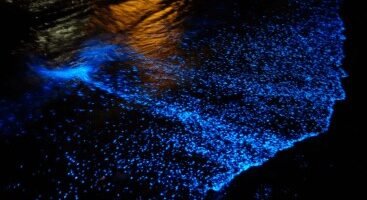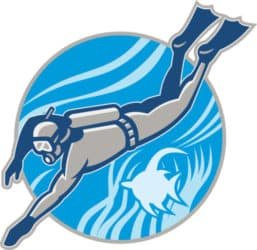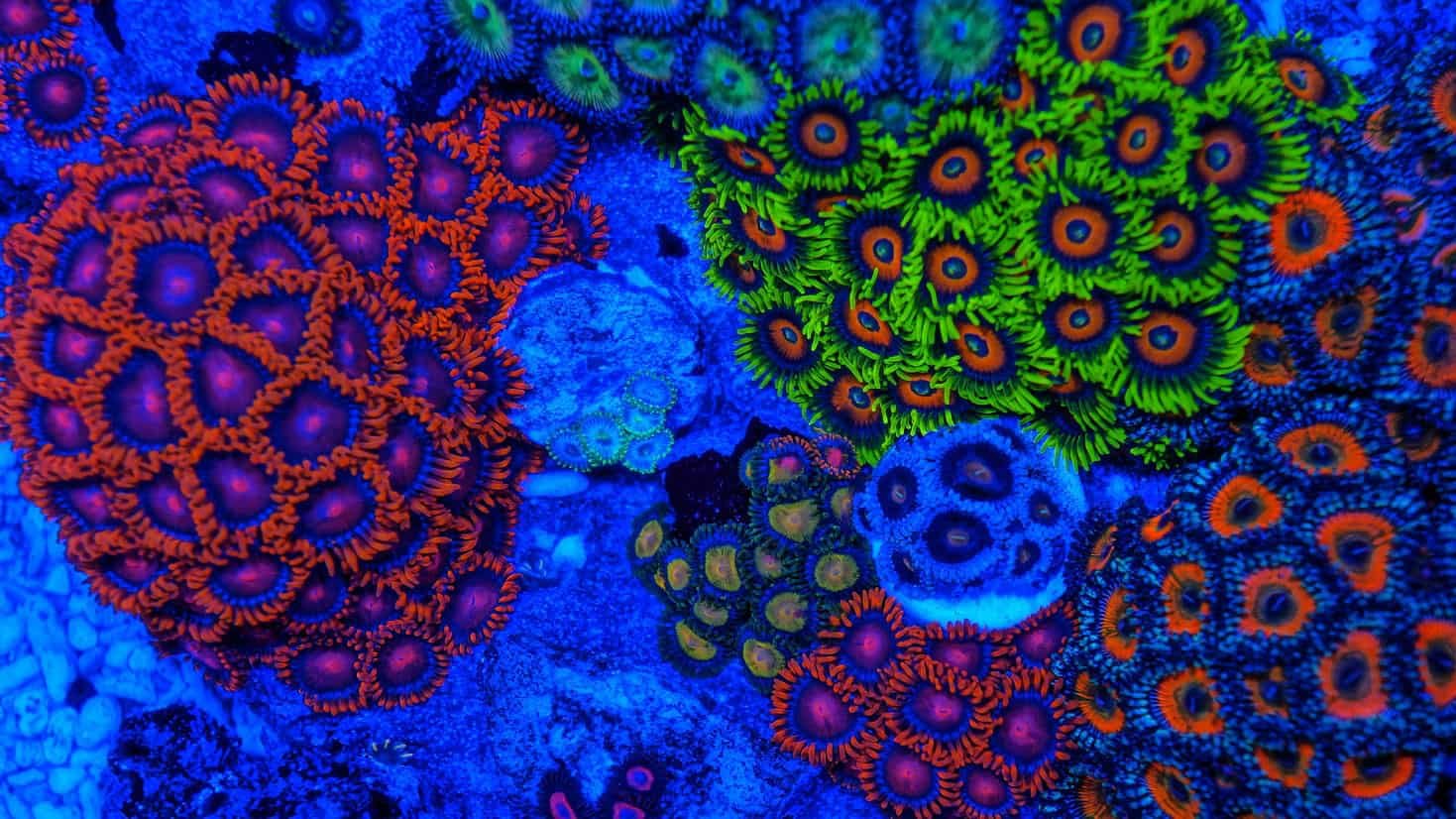
ULTRAVIOLET NIGHT DIVING & SNORKELING
Blue Horizon Diving is the only diving center on Koh Phangan offering some diving with ultraviolet lights. Its a fascinating activity for all.
Indeed Divers & Snorkelers can discover the marine ecosystem of Thailand in amazing glowing fluorescent colors.
It is a unique experience therefore Be the first to share your unforgettable dive!
CORAL FLUORESCENCE
SEE THE UNSEEN
Prepare to be hypnotized by a magical array of psychedelic colours: fluorescent green, orange, blue, yellow, red, purple…
Which species are glowing?
More than 180 species react with the UV light. For instance some of the glowing species include hard and soft corals alive, sponges, shrimps, moray eels, octopus, crabs, anemones, sharks (never seen), sting rays, flatfishes, jelly fish, a variety of shelled animals, coral polyps…
In conclusion, Expect to see all the reef glowing.
Try it! You will love it!
CORAL BIOFLUORESCENCE
Its a natural chemical reaction harmless for the marine life. The zooxanthellae are the one that become fluorescent with UV lights.
Are you curious?
More than 180 species (mostly corals) got some organisms that got the property to appear fluorescent under ultraviolet lights.
The zooxanthellae are the one that become fluorescent with UV lights. They are the organisms responsible for the photosynthesis of the coral.
In addition, Divers & Snorkelers, who are inquisitive by nature, are always looking for new ways to experience the wonders of the underwater world.
Specific gear
To view biofluorescence, fluo divers and snorkelers equip themselves with black light torches: UV or blue lights.
More info about the gear:
When using blue lights, you need to wear a yellow barrier filter. The barrier filter’s function is to block the blue light that is reflected back to the observer from the organisms on which the light is shining. In blocking the blue, all you will see are the emission colors (biofluorescence).
Furthermore, back up white light torches are essential to light better your way as not everything is glowing under the black lights. They are useful as well to light fish that are not appearing in fluorescent.
Besides, to better spot each other during the dive, each diver got a dive marker with a specific color.
BLUE LIGHT vs UV LIGHT
We have those 2 kinds of light. Here below are their differences:
BLUE LIGHT:
The wavelength of light used in most fluorescent torches is a band of blue, somewhere between 440-480 nanometers (depending on the manufacturer). Our dive lights wavelength is 455 nm. The blue light is powerful.
Researchers have discovered that blue light is more efficient in stimulating green fluorescent protein (GFP) and its mutations, which emit colors other than green.
We find this light a bit more powerful than UV, however you will need to wear a barrier yellow visor which is easy to lost or break.
UV LIGHT:
If you wan to see the coral in fluorescent you can as well use ultraviolet lights (black-light) with sub-400nm range.
Our dive lights wavelength is 395 nm. Some companies produce UV torches for underwater use because invisible UV excitation light has the advantage of requiring no additional filters (no mask wearing). In consequence, if you want to take some photos or videos, the result will be closer from the reality with those UV torches.
Some scientific researches:
First of all Mr Philips to talk about this fluorescence phenomenon in England in 1927. He noticed that the anemonies had this property to reflect green fluo under UV light.
Secondly in the 50’s, Luis Marden, noticed this fluoresccence phenomenom when scuba diving as a photographer.
Further in the 60’s René Catala is the first to really study this phenomenom and to write about his researches. Then Richard Woodbridge III was the first to take UV lights under the water. He publishes as well some articles inherent to the subject.
Then in the 70’s, Charlie Mazel starts to buil some UV lights. He is the founder of Nightsea!
In addition, around 2000, David Doubilet was famous for his underwater fluo pictures.
Nowadays, Fluorescent night diving is still not very developed and to be honest I don’t really understand the reason why.
3 phenomena to differentiate
To clarify, Photoluminescence is a generation of luminescence through excitation of a molecule by ultraviolet or visible light photons. Fluorescence and phosphorescence are 2 subdomains of it. The electronic configuration of the excited state and the emission pathway makes their differences.
FLUORESCENCE
Fluorescence is the absorption of one wavelength of light (or colour) and the re-emission of another totally different wavelength of light (or colour).
Want to learn more?
A fluorescent object under white light reveals its true colour. However under near UV light, it absorbs the blue and re-emits a fluorescent colour. In other words its transforming the blue into a brightly glowing, totally different colour.
Three kind of mechanisms can create some fluorescence: a physical (for example, absorption of light), mechanical (friction), or chemical mechanism.
PHOSPHORESCENCE
The phenomenon of phosphorescence corresponds to a property of certain materials which can store light and then restore it little by little in the darkness.
Let's read more
That is to say that some atoms and molecules absorb light at a particular wavelength. Then they subsequently emit light of longer wavelength after a brief interval. This period of time is termed the fluorescence lifetime. On the other hand the process of phosphorescence occurs in a manner similar to fluorescence. But its with a much longer excited state lifetime.
BIOLUMINESCENCE
Moreover, a third phenomenon that often people confuse with fluorescence is the bio-luminescence. A good example are the planctons that produce their own light.
Discover more
In short, Bioluminescence is the production and emission of light by a living organism. It is a form of chemiluminescence. Bioluminescence occurs widely in marine vertebrates and invertebrates.
For example, some fungi, microorganisms including some bioluminescent bacteria and terrestrial invertebrates such as fireflies have the same abilities.
